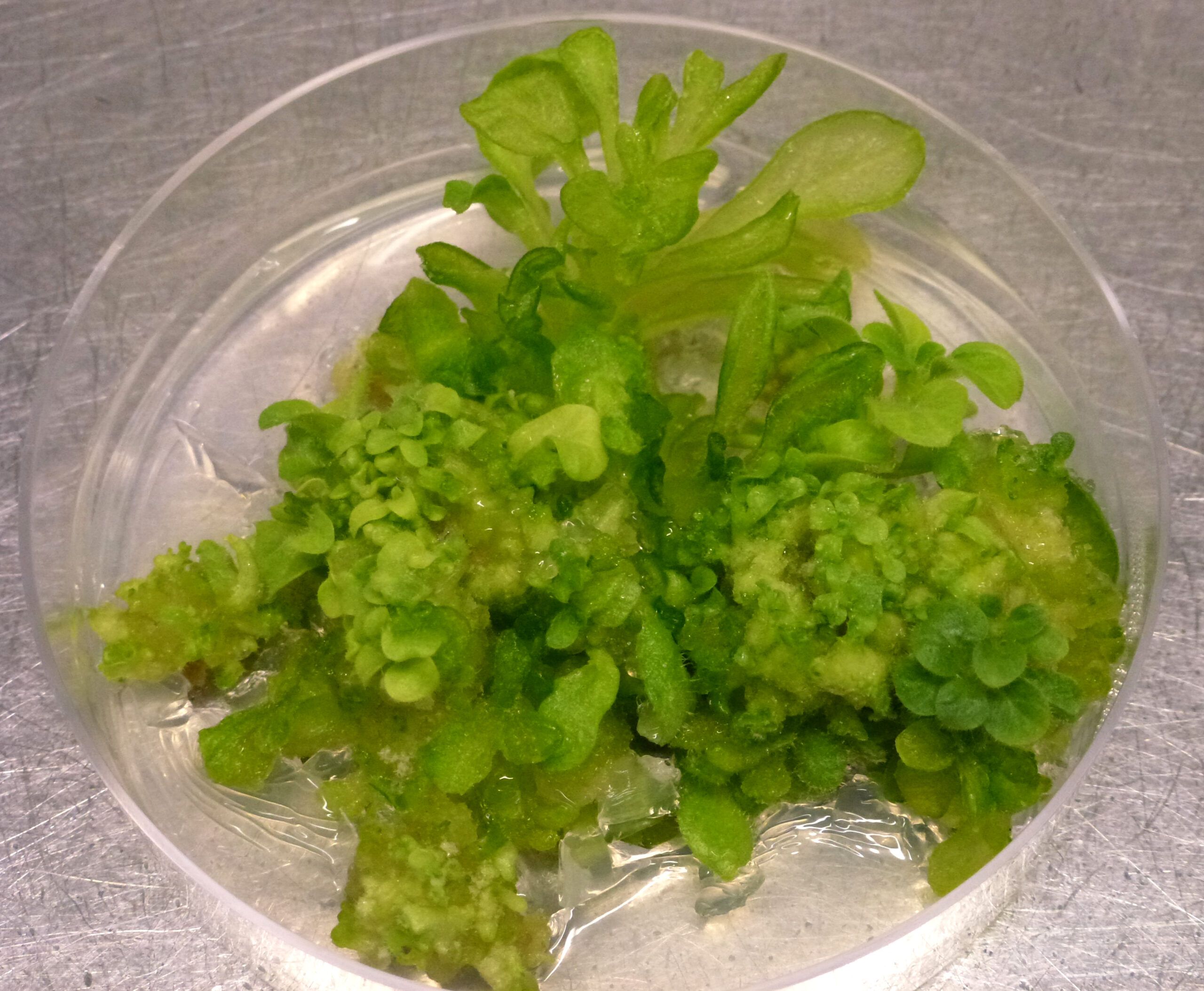Story by Dr Britta Förster
—
The trajectories of insufficient global food supply for an estimated 9.5 billion people on our planet by 2050 according to the World Health Organization – which all deserve to be fed, and ideally fed well – paint a dire picture for our future. Research all over the world explores avenues to improve the yield of our staple crops without needing to increase use of arable land or precious freshwater. One obvious solution is to enhance crop performance by increasing their efficiency in photosynthetic CO2 fixation and translation into growth and useful biomass alongside improved water use efficiency. The challenge is the ‘how’. One of the answers lies in microalgae and cyanobacteria which are more commonly known as blue-green algae. The basic photosynthetic process is the same in cyanobacterial cells as in the chloroplasts of most crop plants that follow the so-called C3 photosynthetic pathway which is prone to operate at suboptimal CO2 levels around the primary CO2-fixing enzyme, Rubisco (ribulose-1,5- bisphosphate carboxylase/oxygenase) and hence below its maximum capacity. Algae, however, evolved a unique biophysical CO2 concentrating mechanisms (CCM) as a tool to achieve high photosynthetic productivity in environments with limiting CO2 supply – just what is needed to improve chloroplast function. However, even though cyanobacteria are allegedly the progenitors of chloroplasts, this type of CCM is absent from the chloroplasts of our modern plants.
The research groups led by Professors Dean Price and Murray Badger in the Research School of Biology at the Australian National University have been studying algal CO2 concentrating mechanisms (CCM) in cyanobacteria for many years, identifying the key genes and proteins involved. With detailed molecular knowledge of the cyanobacterial system at hand, the group initiated a very powerful synthetic biology and biotechnological engineering approach to overcome photosynthetic limitation in higher plants by rebuilding the algal CCM in chloroplasts. Theoretically, the chloroplast CCM could increase photosynthesis by up to 60% which could translate into more 12% and more increase in plant productivity according to comprehensive dynamic crop models. The research forms an independent program within the ARC Center of Excellence for Translational Photosynthesis and the multi-national consortium for Realizing Increased Photosynthetic Efficiency (RIPE) funded through the Bill & Melinda Gates foundation. Currently, the Price group is focussed on the molecular parts of the CCM machinery as well as their biological assembly and functional regulation. In water and other aqueous environments, such as the inside of living cells, CO2 exists as a dissolved gas or in its hydrated form as bicarbonate, collectively referred to as inorganic carbon (Ci). The important cyanobacterial invention is an active uptake system comprised of bicarbonate transport and carbonic anhydrase-like proteins that convert CO2 into bicarbonate, which together build up large reservoirs of bicarbonate inside the cells for subsequent enzymatic release of CO2. To further maximize CO2 capture by Rubisco, clusters of rubisco molecules are bunched together in protein-walled capsules (carboxysomes), which provide a relatively gas-tight environment where high levels of CO2 can be generated directly at the site of its fixation.
The team has been working in parallel on transfer of the two major CCM components, the Ci transport proteins and the carboxysome, into chloroplasts of tobacco plants, which is presently the most suitable model for proof of concept and generation of a functional Chloroplast CCM prototype. Major breakthroughs have been the successful expression of several bicarbonate transport proteins in their intended location on the chloroplast envelope membrane and the assembly of structural precursors which will lead eventually to functional carboxysomes. The devil, however, lies in the detail. Excitement over the correct delivery of essential building blocks is still dampened by the lack of measurable function. Cyanobacteria invented the system, so we can safely assume cyanobacteria also hold the answers to functional requirements. Recently, under the lead of Dr. Britta Förster, the team was able to identify a regulatory protein that modulates bicarbonate transporter activity in response to the cellular energy status in cyanobacteria. Its effectiveness in chloroplast is still being tested. Perhaps another building block? Surely, this is not the last piece to the puzzle and we keep interrogating our cyanobacterial allies. The time is ticking, but worth the effort when considering the “superior” plants we are likely to produce once the picture has emerged in full.
